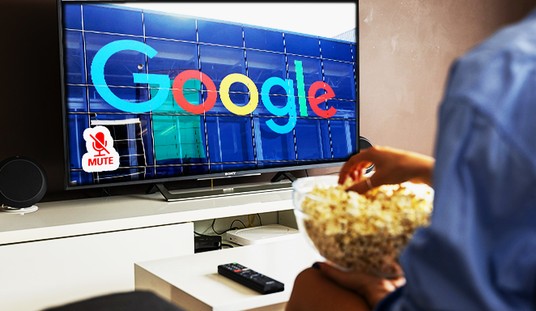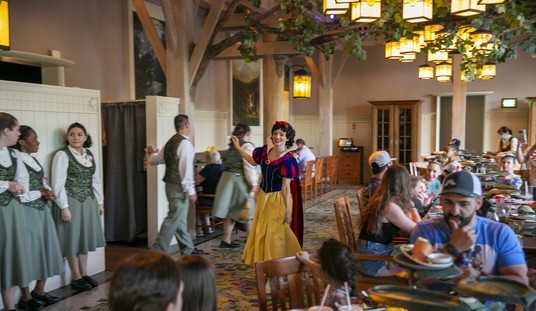I enjoy good satire that really makes a point. The problem with satire is that, for it to be truly good and genuinely funny, the satire must find its basis in truth. Satire that isn’t based in facts doesn’t work and is generally unfunny.
I’ll give you a recent example: over at the humor site Cracked, a recent video by some guy named Michael Swaim presented a fictional TED talk by Walt Disney. The title of the post was “Why Walt Disney Is Nothing Like You Think He Was,” of course guaranteed to generate buzz.
In the video, an actor — Swaim, maybe? — dressed like a used car salesman and, not even trying to imitate Walt’s Missouri twang, spouts off the usual suspects of Disney disinformation. I didn’t embed the YouTube clip here, because it’s not safe for work or kids and because it’s six minutes of your life you’ll never get back. But I will highlight and refute five of the worst smears in the video.
1. “Thanks to the hard work of countless Disney staffers – and no women or black people – my dream of putting my name on everything a human being might come in contact with before age 18 has become a reality.”
Needless to say, this smear ranks right up there with Meryl Streep’s ridiculous characterization of Walt as a “gender bigot” among the most outrageous lies about the Disney patriarch. Whatever the hell “gender bigot” is supposed to mean, Disney’s great niece Abigail (who was all of six years old when Walt died) went right along with it.
It’s not hard to debunk this myth. Though it’s true that women in the early days of the Disney Studios did not work directly as animators, many women worked as in-betweeners, a key part of the animation process — including Marcellite Garner, who became the original voice of Minnie Mouse, and Lillian Bounds, who became Mrs. Walt Disney. Walt relied on many talented women artists and professionals like Mary Blair, whom Walt called his favorite artist and whose influence is all over the Disney Parks, and Phyllis Hurrell, who ran a successful advertising department within the company.
To further debunk this disinformation, I’ll turn to Floyd Norman, the first African-American animator at Disney. (Wait, isn’t he black?)
We already know women were not given the opportunities they deserved back in the thirties. This was not something practiced at Walt Disney Productions alone. This was true of American business in general. Despite that, the women of Disney’s Ink & Paint Department have told me they’ve never had a better job. Were they denied the opportunity to compete with the boys over in the Animation Building? You bet they were. In spite of that, during the war years, young women proved they had what it took to compete with the big boys. Even in the forties, Mary Blair, Retta Scott, Bianca Majolie and Sylvia Holland showed they too had the right stuff. By the fifties, talented young women filled the ranks of Walt’s animation department and their names are too numerous to mention. For example, ever hear the name Phyllis Hurrell? She ran one of Walt Disney’s successful commercial departments at the studio. This was the early days of television and she made a ton of money for the mouse. You probably wouldn’t believe that Uncle Walt had a woman production head back in the fifties, now would you?
Then there was Joe Grant, Dave Detiege, Lou Appet and Ed Solomon. There was Mel Levin, Robert and Richard Sherman, and the list goes on and on. Can you guess where I’m going with this? Why were so many talented Jewish writers, song writers and artists employed at the Disney Studio? Did Walt simply not know? Yeah, he probably had no idea. I can also guess he had no idea why the young black man was in his story meetings. And, how did the famous “Hollywood racist” failed to notice Victor Haboush, Tyrus Wong, Dick Ung, Iwao Takamoto, Willie Ito, Ray Aragon and Ron Dias?
Enough said on this one.
2. “Can any of you name one of these talented Disney animators? Exactly. No one important.”
Maybe most people can’t name any of the Disney animators, but their names do live on among those of us who are rabid Disney fans, as well as those who care about the history of animation in general. Look — let’s be honest: how many animators from any studio in the mid-20th century can you name? Not too many, I would imagine, but that doesn’t render any of them unimportant.
Walt cared for and loved his team immensely, and he gave credit to them as often as possible. He once said, “I credit the success of my films to the teamwork in my organization” and “I take pride in the close-knit teamwork with my organization.”
I’m grateful for writers like Don Peri, animation historians like Michael Barrier, and even Disney family biographers like Bob Thomas who have worked hard for many years to keep the names of animators like the Nine Old Men and the generations after them, along with the artists and Imagineers, alive — and continue to do so.
These folks may not be household names, but Walt knew them and loved them. And among those who care about animation and Disney, they’re superstars. And that’s all that really matters.
3. “It was through relentless vision. From childhood, I pursued my vision without ever questioning its lasting impact or my own motivation, or whether building a sprawling empire out of a cartoon mouse might in fact be the delusion of a madman.”
This is one of the strangest smears in the video, and it’s almost tossed off as an aside. The fact of the matter is, Walt was always concerned about the impact of his product on people in general, and families in particular.
Several quotes from Walt, which I’ve taken from the wonderful treasure of a book Walt Disney: Famous Quotes (as compiled by former Disney archivist Dave Smith), show how much concern Walt had on the effect his company’s output had on society:
“The kind of entertainment we create is meant to appeal to every member of the family.”
“We’re all proud of the honors that many groups around the world have given us. And we’re even more proud that the public – whether in theaters, at Disneyland, or in their homes – continues to express its faith in the kind of family tertainment we produce.”
“A family picture is one the kids can take their parents to see and not be embarrassed. I think that by producing family films we reach the audience that has been dormant at the box office for a long time.”
“I feel a responsibility to the public.”
When he began work on the Florida project, Walt showed his immense concern for the future in his dream of a perfect city of tomorrow, and the Imagineers carried on his commitment to innovative care for the environment after his death, which we can witness all over Walt Disney World.
Anyone with even a casual knowledge of Disney can see that Walt deeply cared about the impact of the films, television shows, and theme parks. The only way one could see otherwise is if one were trying to use disinformation to denigrate the Disney legacy.
4. “The kind of standards that led my employees to…stage massive strikes over their long hours and low pay and for me subsequently to tell the FBI that those union leaders of theirs were Communist agitators just to get them hauled away.”
Sigh. This one is a big doozy — and it’s honestly the episode that opened the door for the entire industry built around disinformation against Walt Disney.
There was really only one strike at the Disney studios that one could even consider “massive,” and it occurred in 1941, just as the studio was gaining momentum. The labor union movement of the 1930s and ’40s had reached Hollywood, and many of the animators and artists in the industry wanted to unionize. Even though Disney employees enjoyed better working conditions and higher salaries than most animators, the studio became a huge target for the guilds and unions who wanted the artists’ business. Before long, a group of animators led by Art Babbitt riled up most of the studio to strike.
The strike lasted for five weeks and created ripples throughout the studio. Several artists and animators left the company, and Walt was so discouraged by the strike that he wanted to get away (so he took several of his best employees on the South American trips that led to Saludos Amigos and The Three Caballeros).
Walt felt so burned by the strike that he became unable to trust nearly anyone outside his inner circle, and he became a staunch anti-Communist as a result. What about those “Communist agitators”? Well, as Neal Gabler tells it, that characterization isn’t terribly far from the truth:
Walt’s belief that the [Screen Cartoonists’ Guild] was Communist-inspired was undoubtedly sincere. It may also not have been entirely wrong. Arthur Babbitt certainly wasn’t a Communist, nor were any of the other animators, but Dave Hilberman, the assistant who had begun organizing the studio, had by his own admission been a member of the Communist Party and had even traveled to Russia when he was a young man. Moreover an FBI report called William Pomerance, soon to be the union’s business manager, “one of the leading Communists in the movie industry” and claimed that as least since July 1941, a month after the strike began, the union had followed the Communist Party line.
Incidentally, many people credit Babbitt with the rumors of Walt’s supposed antisemitism, the most dogged of the disinformation against Disney.
5. “I was the only children’s entertainer with the vision to meet with Nazi propagandist Leni Riefenstahl shortly after Kristallnacht when everyone else in town refused on ‘moral principles’ – well, I just call it old-fashioned rudeness.”
Unfortunately, the story of Nazi propaganda filmmaker Leni Riefenstahl‘s visit to the Disney studio, which included a face-to-face meeting with Walt, is true. And those who engage in disinformation against Walt point to the incident and breathlessly shout, “See! See! Walt was an antisemite.” But the truth sheds a little more light on the story.
Gabler writes that “Riefenstahl had slipped into California quietly and had asked to meet [Walt] because she considered him ‘the greatest personage in American films.'” At first, Walt must have only known of her by name, because at the outset of the meeting he expressed interest in her offer to screen one of her films for him. As the meeting went on, he must have discovered her Nazi affiliation, because he hesitated to accept her invitation.
The truth was that Walt was extremely politically naive at the time — in later years he distanced himself from Riefenstahl and downplayed the meeting, as Gabler writes, “claming he hadn’t known who she was when he issued the invitation.”
Still, the meeting did take place, and the Left has used it ever since to tar and feather Walt with disinformation.
—
I could go on and on — in fact, this post just covers the first half of the video. These examples just scratch the surface of how horribly off-base Swaim’s unfunny characterizations of Walt Disney are. Yet somehow, as I alluded earlier in this post, the campaign of disinformation against Walt has turned into a sort of cottage industry, determined to damage Walt’s reputation at any cost.
Last year, in the post I wrote about Meryl Streep’s smear of Walt, I concluded:
To the Left, Walt Disney’s memory is something to be sullied and tarnished. Disney’s commitment to traditional American values flies in the face of everything people like Streep stand for. Now that both of Walt’s daughters and Roy’s son have all passed away, I fear that the campaigns against Walt and Roy will only get worse. The Left stands at the ready to use disinformation against the Disneys at every turn. It’s up to us who care about the truth to call out the lies and expose it for what it is.
I fear that my words take on even greater urgency as time goes on. I’m passionate about telling the truth about Walt Disney, and will use the forum I’m blessed with to take every chance I get to protect the real reputation of the man behind the mouse.









Join the conversation as a VIP Member